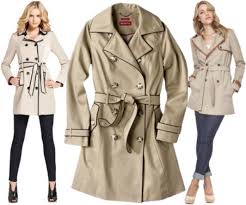

Misc Fashion
Trim Clothing Budgets
Clothing straddles a number of consumer markets, which makes it one of the most visible and regular consumer spending categories. Everyone requires clothes, so there is a highly practical aspect to purchasing garments, but clothing purchases are also subject to fashion considerations, making them highly discretionary as well. As a result, individual clothing budgets are as unique as the people who create them. Whether you are a fan of fashion, seeking to reflect the latest trends within your wardrobe, or a pragmatic clothing shopper, only interested in meeting the need to cover your body, simple approaches help keep clothing costs in line with your budget.
Be Realistic about What You can Afford
One of the most common reasons shoppers spend too much on clothes is their desire to stay current with the latest designer fashions. While name-brand designer clothes may have the unique features and cutting-edge fashion appointments you find attractive, they also come with some of the highest clothing price-tags you’ll find. If money is no object, and your budget allows for extravagant spending, designer clothes may be an option. On the other hand, saving money on clothing purchases might mean adjusting your personal standards away from exclusive designer options.
Rather than resigning yourself to the high cost of unique high-fashion garments, ground your purchases in decent quality copies bearing some of the same distinct fashion features found on brand-name labels.
Seasonal Savings Stretch Clothing Dollars
Perhaps the most significant cyclical savings opportunity is found buying off-season clothes at discounted prices. Retailers are limited by the amount of storage and display space available for showcases clothes, as a result, they cannot afford to allow past-season merchandise to linger on sales floors. Even wholesalers abound by the retail cycle, which features well-defined selling seasons and ever-changing merchandise. The end result for consumers is an easy to follow discounting calendar that accounts for revolving seasonal merchandise.
To consistently save money on clothes, it makes the most sense to buy off-season. The worst time of year to buy a heavy winter coat is during cold-weather months when coats are at a premium. Supply and demand dictates that when need is high, prices will be at peak levels. On the other hand, during summer months, when heavy garments are not required the price of boots, coats and sweaters declines. Monitoring sale prices helps zero-in your search for bargain off-season clothes, but you can count on summer clothes going on-sale during July and August, and winter fashions to begin showing deep discounts in February and March.
Stick to the Basics
Fashion evolves at a brisk pace, quickly leaving flash-in-the-pan clothing trends by the wayside. And though it is nice to freshen up your look every once in a while, changing-out your wardrobe to keep pace with fashion trends leads to serious spending on clothing. When your clothes budget is a concern, it makes more sense to lean on staples and enduring designs that never go out of fashion. By building a foundation of acceptable basic clothes, you’re ready for any occasion, without the need for excessive spending.
Basic clothes can be embellished with trending accessories, in order to make them more diverse and flexible. Earth tone foundations, for example, benefit form splashes of color and patterned accompaniments. And classic black designs can be worn independently for a sleek modern look, or remade entirely with colorful accessories and add-ons. Managing a sustainable wardrobe of staples enables you to coast during challenging economic times, leaning on the clothes that are already in your closet, rather than seeking expensive replacements. Once prospects are better, small, calculated clothing purchases keep your wardrobe moving forward, without breaking the bank.

 Home Remedies5 years ago
Home Remedies5 years ago9 Yeast Infection Symptoms You Shouldn’t Ignore

 Home Remedies5 years ago
Home Remedies5 years agoHow to Remove the Cholesterol Deposits Around Your Eyes

 Home Remedies5 years ago
Home Remedies5 years ago8 Silent Signs Of Liver Cancer You Should Not Ignore

 Home Remedies5 years ago
Home Remedies5 years agoWOW! 6 amazing ways to heal tooth decay and reverse cavities naturally!

 Home Remedies5 years ago
Home Remedies5 years ago15 CANCER SIGNS WOMEN OFTEN OVERLOOK!

 Home Remedies5 years ago
Home Remedies5 years ago12 Ways Your Body Tries To Tell You That Your Liver Is Being Damaged

 Home Remedies5 years ago
Home Remedies5 years ago18 Signs Of Fibromyalgia You Need To Be Aware Of

 Belly Fat5 years ago
Belly Fat5 years agoThe Boiled Egg Diet Lose 24 Pounds in 2 Weeks










